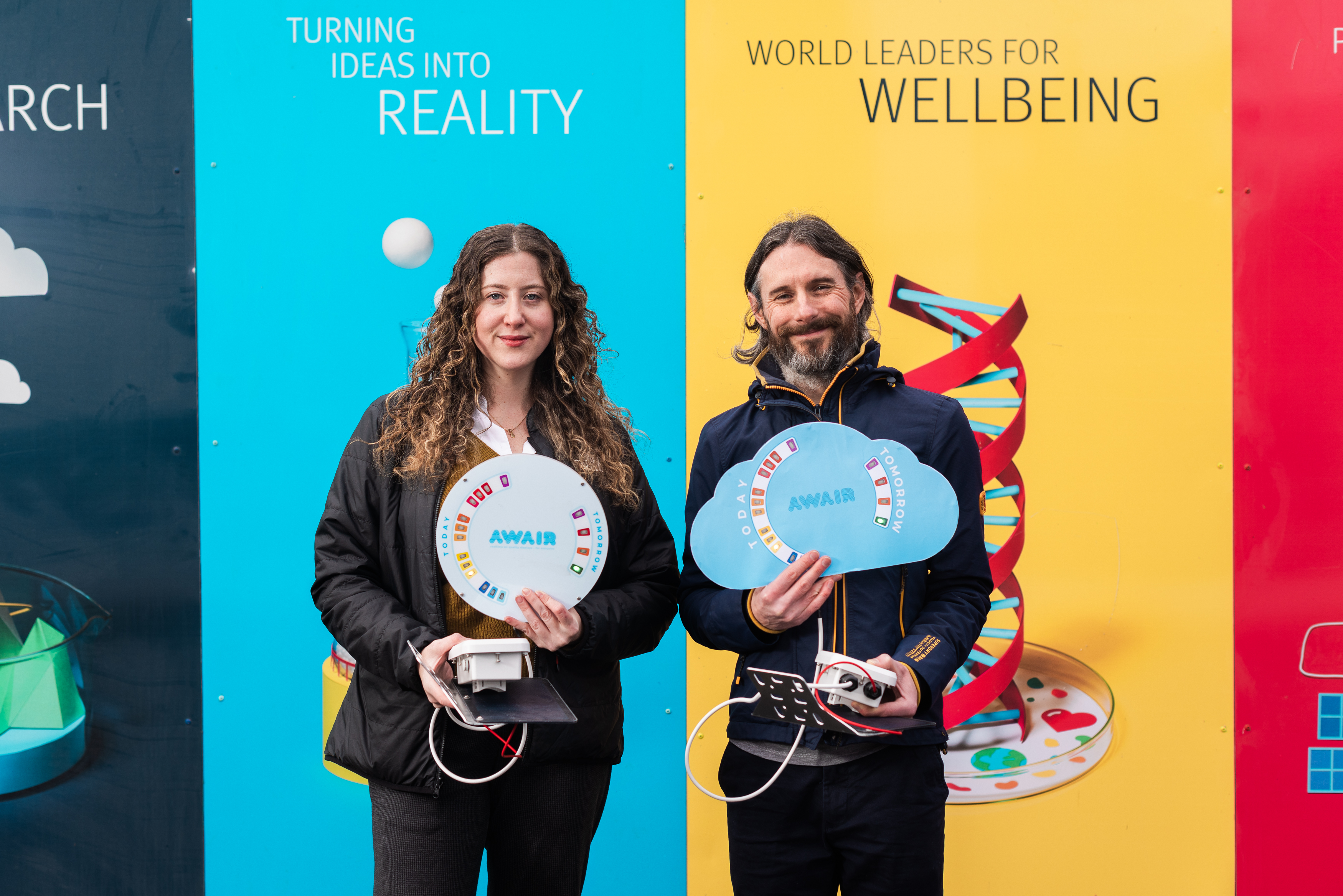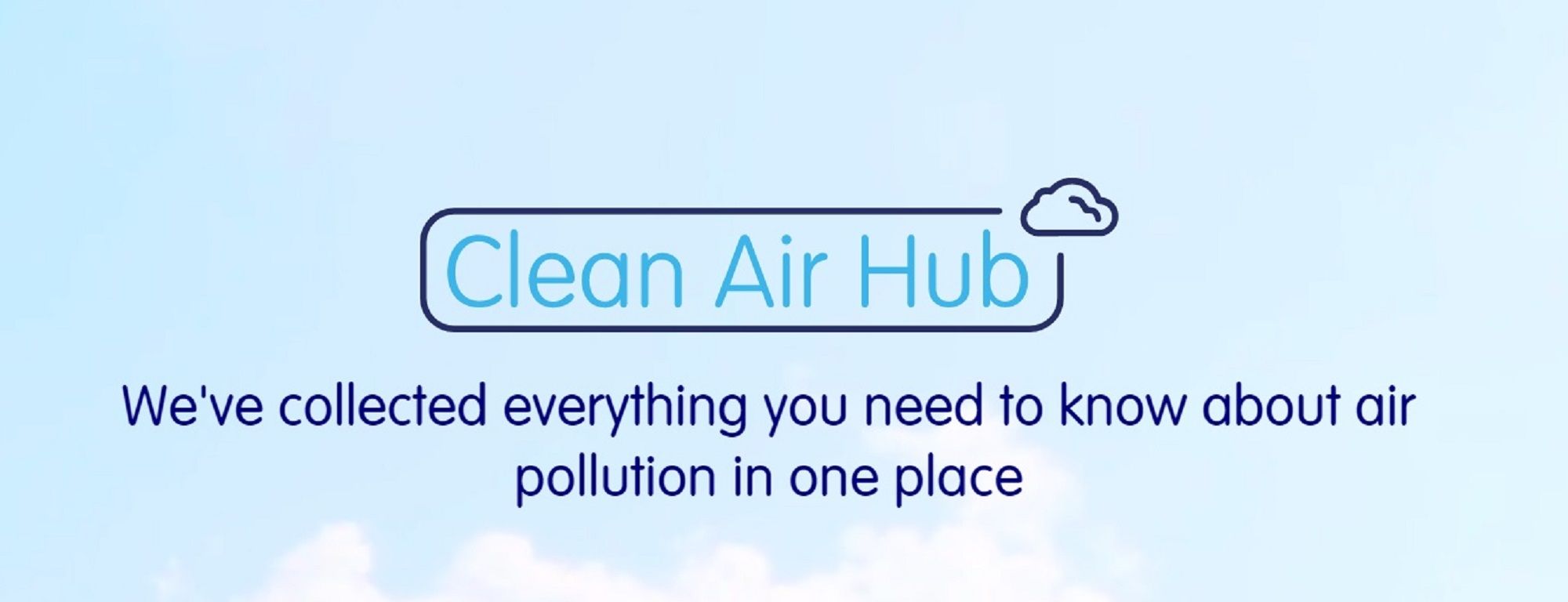The following projects comprise the Environmental Health Communications Research portfolio [currently within the Exposure Science team], co-lead by Dr. Kayla Schulte & Andrew Grieve. This academic research explores how to generate and communicate information aimed at improving human and environmental health.
While these projects maintain a focus on communication, they are academic research projects that differ substantively from the broader PR, communications, outreach and engagement activities conducted across ERG.
Research Projects
Communicating Air Quality: Digital, Physical and Theorectical Advances (British Academy/Wellcome Trust funded conference) - 13 March 2025
 As lead applicants, Kayla and Andrew were awarded funding from British Academy/Wellcome Trust as a part of their aim to bring together scholars and specialists from around the world to explore themes related to health and wellbeing. This conference is the first of its kind, as it is dedicated explicitly to unpacking how air quality is communicated in our world. It will bring together experts from the fields of sociology, science technology and society, public health, air pollution science, data science (visualisation) and will feature cutting-edge research and technologies that make up the 'air quality information landscape’. By convening individuals from across disciplines, this conference hopes to build an international network of scholars and practitioners involved in advancing air quality communication efforts.
As lead applicants, Kayla and Andrew were awarded funding from British Academy/Wellcome Trust as a part of their aim to bring together scholars and specialists from around the world to explore themes related to health and wellbeing. This conference is the first of its kind, as it is dedicated explicitly to unpacking how air quality is communicated in our world. It will bring together experts from the fields of sociology, science technology and society, public health, air pollution science, data science (visualisation) and will feature cutting-edge research and technologies that make up the 'air quality information landscape’. By convening individuals from across disciplines, this conference hopes to build an international network of scholars and practitioners involved in advancing air quality communication efforts.
AWAIR
 AWAIR is a pioneering study piloting the co-design, creation and investigation of the impact of outdoor air quality displays on community awareness and understanding of air quality. The pilot prototypes, developed in partnership with residents, present current air quality levels on the left side and the forecast for tomorrow on the right side. Utilising data from a real-time air quality model, accessible via londonair.org.uk, the devices are not air quality monitors themselves but are designed to inform and educate the community about their air quality status. The displays feature a new colour scale, which indicates whether hourly air quality meets or exceeds WHO thresholds.
AWAIR is a pioneering study piloting the co-design, creation and investigation of the impact of outdoor air quality displays on community awareness and understanding of air quality. The pilot prototypes, developed in partnership with residents, present current air quality levels on the left side and the forecast for tomorrow on the right side. Utilising data from a real-time air quality model, accessible via londonair.org.uk, the devices are not air quality monitors themselves but are designed to inform and educate the community about their air quality status. The displays feature a new colour scale, which indicates whether hourly air quality meets or exceeds WHO thresholds.
There will be a small scale roll out of the AWAIR displays across three neighbourhoods in London: Peckham in Lambeth, Gipsy Hill in Southwark, and White City in Hammersmith and Fulham. The locations for the AWAIR project were strategically planned in areas with intersecting inequities, including high annual air pollution levels, greater instances of certain health conditions, and high digital inequality.
The pilot will run through to the summer 2025.
Breathe London: Community Programme
.jpg) The Breathe London Community Programme (BLCP), funded by Bloomberg Philanthropies, aims to democratise air quality monitoring by supplying nodes and programme of support to communities across London. The programme enables communities to access data about air quality in their local area, while supporting efforts to reduce air pollution exposures. A key objective of the Community Programme is to create a community of sensor-owners, through in-person and online events. If you are interested in joining this community, please email breathelondon@imperial.org
The Breathe London Community Programme (BLCP), funded by Bloomberg Philanthropies, aims to democratise air quality monitoring by supplying nodes and programme of support to communities across London. The programme enables communities to access data about air quality in their local area, while supporting efforts to reduce air pollution exposures. A key objective of the Community Programme is to create a community of sensor-owners, through in-person and online events. If you are interested in joining this community, please email breathelondon@imperial.org
This allows the project to engage groups that have not traditionally engaged in conversations surrounding air quality. The Programme helps facilitate public engagement around air quality and encourages the creation of community-led initiatives, supported by calibrated, scientific measurements and the experiences and lessons learned from other groups within the network. Community groups were
selected through an application process and judged by an independent panel. Selection criteria were based on deprivation, community support, potential impact, diversity, long- term engagement, and project aims. In the first round of the programme 10 nodes were provided to groups. In the second round, 30 nodes were administered and in the final round 20 nodes were administered, resulting in a total of 60 community groups being awarded nodes across London. For the full list of BLCP groups, visit this link.
Coming Soon: UK Digital Air Quality Landscape mapping
 This review was commissioned by the Department for Environment, Food & Rural Affairs (Defra) to deliver insight into the current landscape of digitally available air quality (AQ) information in the UK. It is intended to assist the Air Quality Information Systems (AQIS) review panel, which is undertaking a comprehensive review of how government communicates AQ information. The review examines the characteristics and evolution of air quality information channels (or AQ channels). Within the context of this review, AQ channels are “proliferating, internet-enabled AQ information sources that can blend personal information like geolocation, age and presence of pre-existing health conditions, alongside real-time (or near real-time) AQ estimates or measurements, to provide tailored recommendations for reducing exposure to pollution”.
This review was commissioned by the Department for Environment, Food & Rural Affairs (Defra) to deliver insight into the current landscape of digitally available air quality (AQ) information in the UK. It is intended to assist the Air Quality Information Systems (AQIS) review panel, which is undertaking a comprehensive review of how government communicates AQ information. The review examines the characteristics and evolution of air quality information channels (or AQ channels). Within the context of this review, AQ channels are “proliferating, internet-enabled AQ information sources that can blend personal information like geolocation, age and presence of pre-existing health conditions, alongside real-time (or near real-time) AQ estimates or measurements, to provide tailored recommendations for reducing exposure to pollution”.
Social media
Keep up to date by following us on our social channels
Twitter: ERGImperial | YouTube: Environmental Research Group


